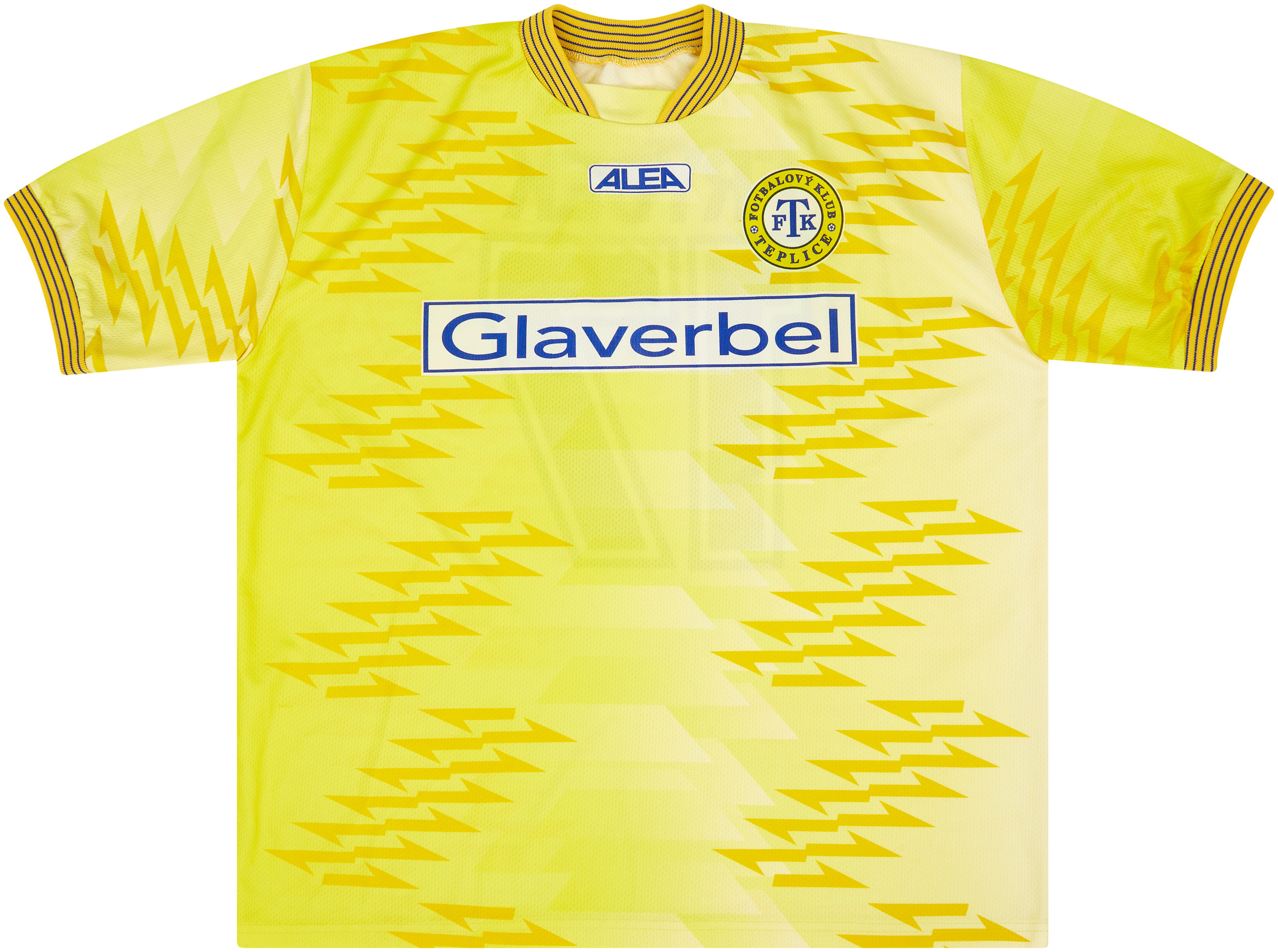Teplice
Introduction Football Club Teplice, commonly referred to as Teplice, is a prominent presence in Czech football, based in the city of Teplice in the northwest of the country. Established in 1945, the club has since become a significant contributor to the local sports culture and has built a passionate fanbase. The team’s distinctive yellow and […]
1999-00 Teplice Home Shirt Frydek #17 - 9/10 - (XL)
148.99£ - ca: €176
2000-01 Teplice Home Shirt - 9/10 - (XL)
106.99£ - ca: €126
Introduction
Football Club Teplice, commonly referred to as Teplice, is a prominent presence in Czech football, based in the city of Teplice in the northwest of the country. Established in 1945, the club has since become a significant contributor to the local sports culture and has built a passionate fanbase. The team’s distinctive yellow and blue colors resonate deeply with supporters and symbolize the resilience and pride of the region. Teplice is not just a football club; it embodies the spirit of its community and has a rich history that reflects the evolution of Czech football.
Club History
FC Teplice was founded shortly after World War II, in 1945, originally under the name SK Teplice-Trnovany. It spent its early years in regional leagues but quickly began climbing through the ranks. The club’s first major achievement came in 1956 when it was promoted to the top tier of Czechoslovak football. Throughout the 1960s and 1970s, Teplice consistently challenged for honors, establishing itself as a top football club in the Czechoslovak league. The club is particularly noted for its strong performances in the 1980s, when it regularly finished among the top ranks in the league.
In 1993, following the split of Czechoslovakia into two separate entities, FC Teplice continued to compete in the Czech Republic’s domestic leagues. Over the years, the club has adapted to various changes in the football landscape, demonstrating both resilience and ambition in its pursuit of success.
Achievements
FC Teplice has an impressive history of achievements, both domestically and internationally. Their most notable domestic accomplishment came in 1976 when they won the Czechoslovak Cup. This victory remains one of the high points of the club’s history and cemented Teplice’s reputation as a strong competitor in Czech football. In the subsequent years, particularly during the 1990s and 2000s, Teplice continued to perform at a high level, regularly finishing in the top half of the Czech league.
In the Czech First League, Teplice has enjoyed relative success, finishing as runners-up on several occasions in the 1990s and 2000s. They have qualified for European competitions multiple times, with their most notable run in the UEFA Intertoto Cup, where they reached the semi-finals in 2001. This performance not only showcased the club’s talent on a continental stage but also highlighted their ability to compete with some of Europe’s top teams.
Significant Players and Matches
Throughout its history, FC Teplice has been home to numerous significant players who have made lasting contributions to the club. One of the most celebrated figures is Pavel Verbíř, a midfielder who played for Teplice from 1993 to 2004, accumulating over 300 appearances. Verbíř is not only regarded as one of the club’s legends but also earned caps for the Czech national team during his career.
Another notable player is Radim Kučera, who was a stalwart in the club’s defense during the early 2000s. His leadership on the field helped solidify Teplice’s reputation as a formidable team. The club also gained recognition during standout matches that included memorable victories against traditional rival clubs such as Sparta Prague and Slavia Prague, often causing upsets that delighted fans and added to the club’s folklore.
Cultural Impact
FC Teplice holds a significant place in the local culture of Teplice and its surrounding regions. The club serves as a focal point for the community, bringing together fans from diverse backgrounds to support their team. Home matches at the AGC Aréna, Teplice’s stadium, create an electrifying atmosphere, drawing crowds that reflect the unwavering loyalty of their supporters.
The club’s community outreach programs further enhance its cultural impact. Teplice engages with local schools and youth programs, promoting the importance of sports as a means of fostering teamwork, discipline, and social values. This dedication to the community not only helps cultivate future generations of footballers but also strengthens the bond between the club and its fans.
Conclusion
FC Teplice remains a vital part of Czech football history, reflecting the rich traditions of the sport in the region. With a storied past marked by key achievements, notable players, and an enduring connection to its fanbase, Teplice has etched its name in the annals of football. As the club continues to compete and strive for excellence, it stands not only as a team on the pitch but as a symbol of pride for the city and its community. Teplice’s journey through the years illustrates the passion, resilience, and enduring spirit of football in the Czech Republic.

